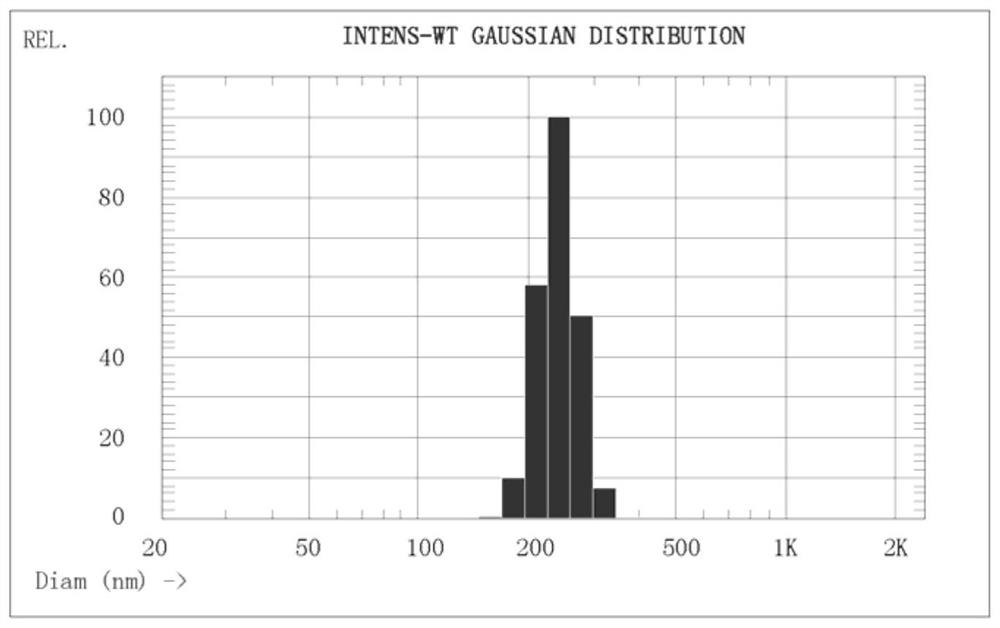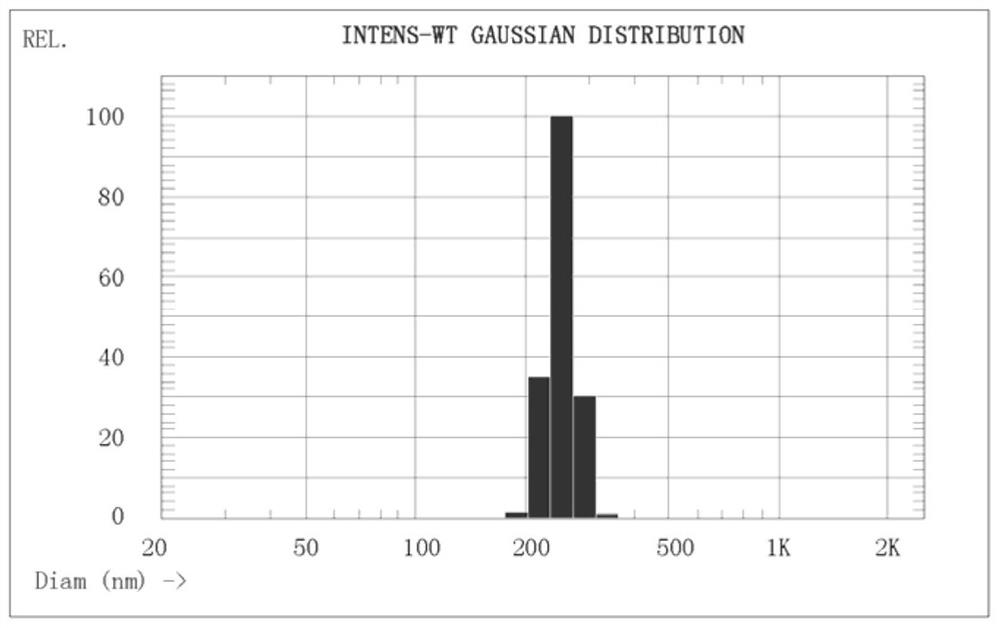Receptor reagent and application thereof
A reagent and receptor technology, applied in the field of receptor reagents, can solve problems such as extremely high sensitivity requirements, and achieve the effects of high sensitivity, improved detection precision, and reduced production costs
- Summary
- Abstract
- Description
- Claims
- Application Information
AI Technical Summary
Problems solved by technology
Method used
Image
Examples
Embodiment 1
[0059] Embodiment 1: acceptor particle a preparation
[0060] 1.1 Preparation and characterization process of carrier
[0061]1. Prepare a 100ml three-necked flask, add 40mmol styrene, 5mmol acrolein, and 10ml water, stir for 10min, and pass N 2 30min;
[0062] 2. Weigh 0.11g of ammonium persulfate and 0.2g of sodium chloride, dissolve them in 40ml of water to form an aqueous solution. This aqueous solution is added in the reaction system of step 1, continues to pass through N 2 30min;
[0063] 3. Raise the temperature of the reaction system to 70°C and react for 15 hours;
[0064] 4. Cool the emulsion after the reaction to room temperature and filter it with a suitable filter cloth. The obtained emulsion is washed with deionized water by centrifugation and sedimentation until the conductivity of the supernatant at the beginning of centrifugation is close to that of deionized water, then diluted with water, and preserved in the form of emulsion;
[0065] 5. The Gauss...
Embodiment 2
[0088] Embodiment 2: preparation of acceptor particle b
[0089] 2.1 Preparation and characterization process of carrier
[0090] 1. Prepare a 100ml three-necked flask, add 40mmol styrene, 5mmol acrolein, and 10ml water, stir for 10min, and pass N 2 30min;
[0091] 2. Weigh 0.11g of ammonium persulfate and 0.2g of sodium chloride, dissolve them in 40ml of water to form an aqueous solution. This aqueous solution is added in the reaction system of step 1, continues to pass through N 2 30min;
[0092] 3. Raise the temperature of the reaction system to 70°C and react for 15 hours;
[0093] 4. Cool the emulsion after the reaction to room temperature and filter it with a suitable filter cloth. The obtained emulsion is washed with deionized water by centrifugation and sedimentation until the conductivity of the supernatant at the beginning of centrifugation is close to that of deionized water, then diluted with water, and preserved in the form of emulsion;
[0094] 5. The Gau...
Embodiment 3
[0107] Embodiment 3: Utilize anthrone method to detect the sugar content of microsphere
[0108] 1. Microsphere sample pretreatment:
[0109] Take the donor reagent A containing 1 mg of donor microspheres a in Example 1 and the donor reagent B containing 1 mg of donor microspheres b in Example 2 respectively, centrifuge at 20000 g for 40 min, pour off the supernatant and use purified water to sonicate Disperse, repeat centrifugation and disperse three times, then dilute to 1 mg / mL with purified water.
[0110] 2. Preparation of glucose standard solution:
[0111] Prepare 1mg / mL glucose stock solution with purified water to prepare standard solution curves of 0mg / mL, 0.025mg / mL, 0.05mg / mL, 0.075mg / mL, 0.10mg / mL, 0.15mg / mL, such as figure 1 shown.
[0112] 3. Preparation of anthrone solution: use 80% sulfuric acid solution to prepare 2 mg / mL (this solution is stable within 24 hours at room temperature, and it is ready for use).
[0113] 4. Add 0.1mL glucose standard solution...
PUM
| Property | Measurement | Unit |
|---|---|---|
| particle size | aaaaa | aaaaa |
| particle size | aaaaa | aaaaa |
| particle size | aaaaa | aaaaa |
Abstract
Description
Claims
Application Information
 Login to View More
Login to View More - R&D Engineer
- R&D Manager
- IP Professional
- Industry Leading Data Capabilities
- Powerful AI technology
- Patent DNA Extraction
Browse by: Latest US Patents, China's latest patents, Technical Efficacy Thesaurus, Application Domain, Technology Topic, Popular Technical Reports.
© 2024 PatSnap. All rights reserved.Legal|Privacy policy|Modern Slavery Act Transparency Statement|Sitemap|About US| Contact US: help@patsnap.com










